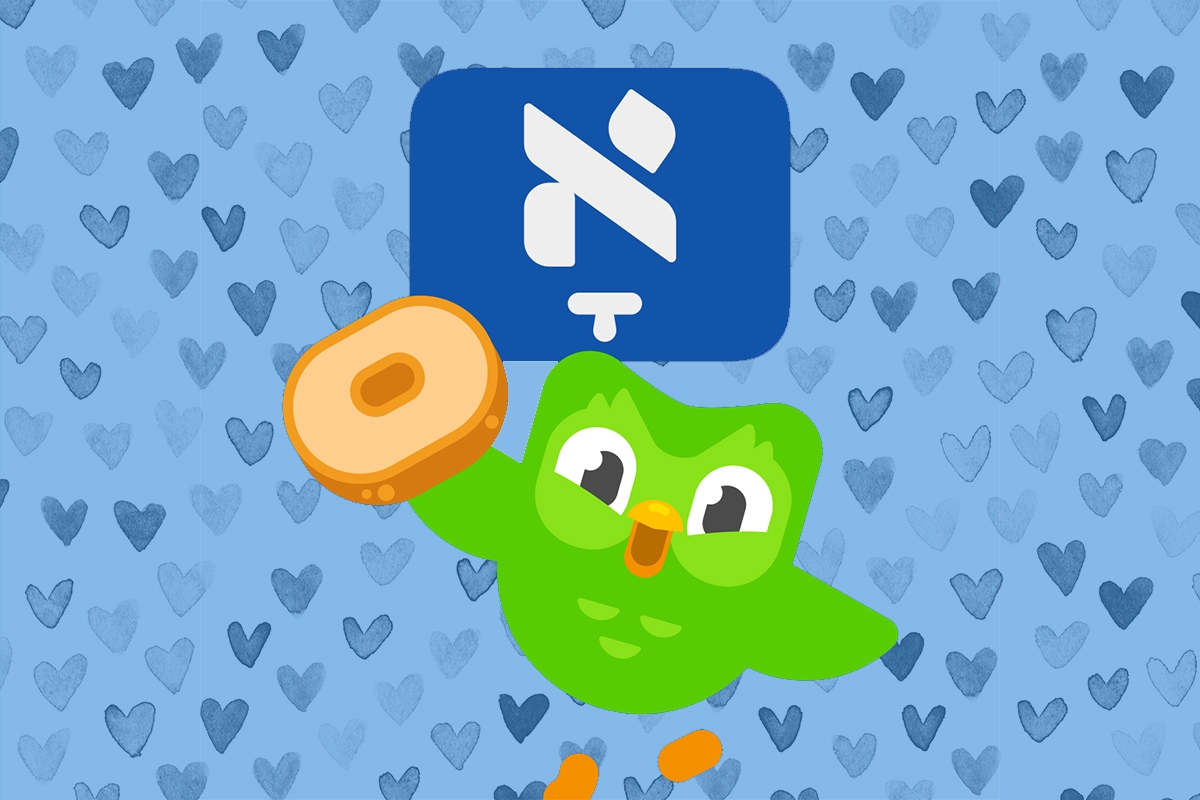“Mame, a ber!”
That’s how you say, “Mom, a bear!” in Yiddish — a phrase that I imagine must be very useful in very particular situations.
Now, if you didn’t know this essential phrase until just now, that’s OK! I actually just learned it myself — courtesy of the popular language-learning app Duolingo, which is launching a new Yiddish course on Tuesday, April 6.
You may be already familiar with Duolingo, the popular app that helps you create daily goals for learning a new language. More specifically, you may be familiar with Duo, its green owl mascot, who is notorious for guilt-tripping users for missing their daily language-learning goals. With the inclusion of Yiddish, Duolingo now offers lessons in 40 distinct languages, and, according to the company, the app has some 300 million active users.
I count myself among them — well, at least I was one, three years ago, when I attempted to cram some Italian before a month-long trip to Verona. But I got a sneak peek at the new Yiddish course and I was excited to give it a whirl. Aside from working for a publication with a Yiddish name, I was already a bit familiar with some Yiddish words, courtesy of my grandparents, like schlep, nosh, schmutz, and, of course kvell.
Still, I am very much a beginner, so I took a quick test drive of the first unit, which included pronouncing letters of the Yiddish alphabet. (Here, I quickly learned that knowing some Hebrew really helped — although, much of the lesson I took honed in on differentiating Yiddish vowels from Hebrew ones; for example, the Hebrew letters and vowels for “ah” actually make an “oh” sound in Yiddish). As I progressed, I learned more helpful words like nein (no), rahz (rice), and ayn (one).
According to my app-created lesson plan, unit two will include greetings, vocabulary about home and, of course, food. I’m really looking forward to that one.
Creating the Yiddish course — which, according to the Forward, constitutes some 1,300 lessons — was no easy feat. The process relied heavily on volunteers, who put in thousands of hours in order to design the lesson plans.
A key player was Meena Viswanath, who comes from a family of high-profile Yiddish scholars. (Her mother and grandfather are well-known Yiddishists and her brother, Arun, published the first translation of a Harry Potter book in Yiddish.) The project’s “grammar maven,” according to the Forward, she was tasked with blending academic Yiddish — her wheelhouse — with the everyday dialect spoken by some 500,000 mostly Hasidic Jews around the world.
“We used mostly the spelling and grammar that’s a little bit more formalized among the secular Yiddishists,” Viswanath told our partner site, JTA. “But then when we recorded the audio, we used the pronunciation that is used in the vernacular among students, specifically in Borough Park in Brooklyn and so forth.”
Duolingo’s Yiddish course is well-timed: Apparently, there’s been an “explosion” of interest in the Jewish language during the pandemic. Last summer, the Workers Circle’s Yiddish classes saw enrollment jump 65% jump from the previous year, while YIVO’s Uriel Weinreich Summer Program saw attendance increase by 60%. As my colleague, Andrew Silow-Carroll, wrote recently in the New York Jewish Week, “The coronavirus, terrible in just about every way, has been very good for Yiddish.”
Now, I may not have spent the pandemic mastering a language or perfecting sourdough. But as the pandemic slowly abates, I am looking forward to learning a bit more of the language of my ancestors. What’s more, the course is also a very welcome reminder that Yiddish is far from being a dead language. To that end, the clever marketers at Duolingo are offering a pretty sweet deal: a free bagel at select bagel shops to anyone who orders a bagel fully in Yiddish on Tuesday. (If you’d like to start practicing, here’s what to say: “Ken ikh hubn a baygl mit shmirkeyz.”)
Beyond free bagels, the course provides Yiddish a respectability that many have sought in the wider sphere. “So many people, especially Americans, are aware of Yiddish. But their awareness is often limited to stereotypes, or a few phrases here and there that they heard their grandparents or neighbors say,” Viswanath said. “And I really hope that those people will open the course and start doing it and realize, ‘Hey, Yiddish is a real language, it’s got grammar, it has a vocabulary.’”
Header image by Michaela Kron (courtesy of Duolingo)








